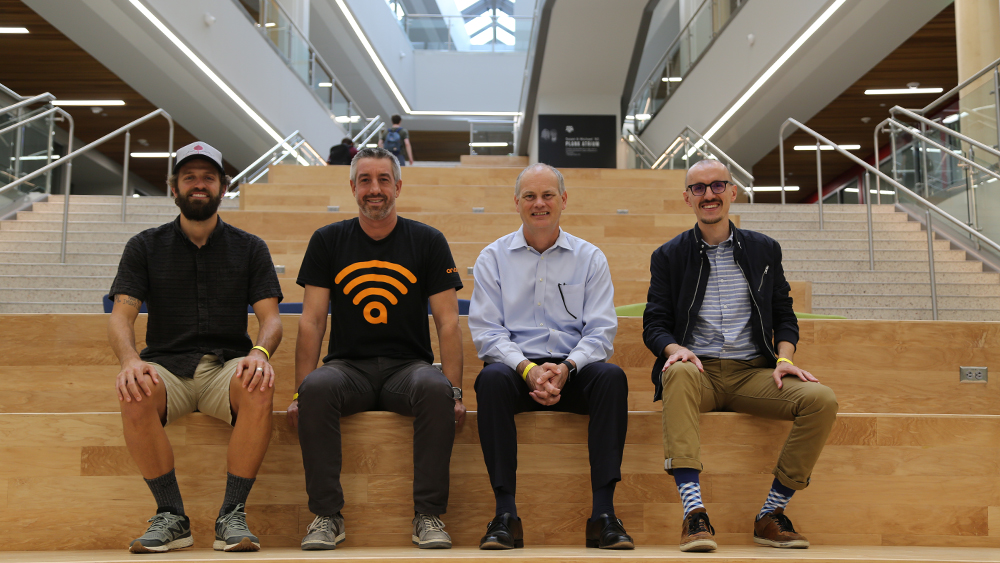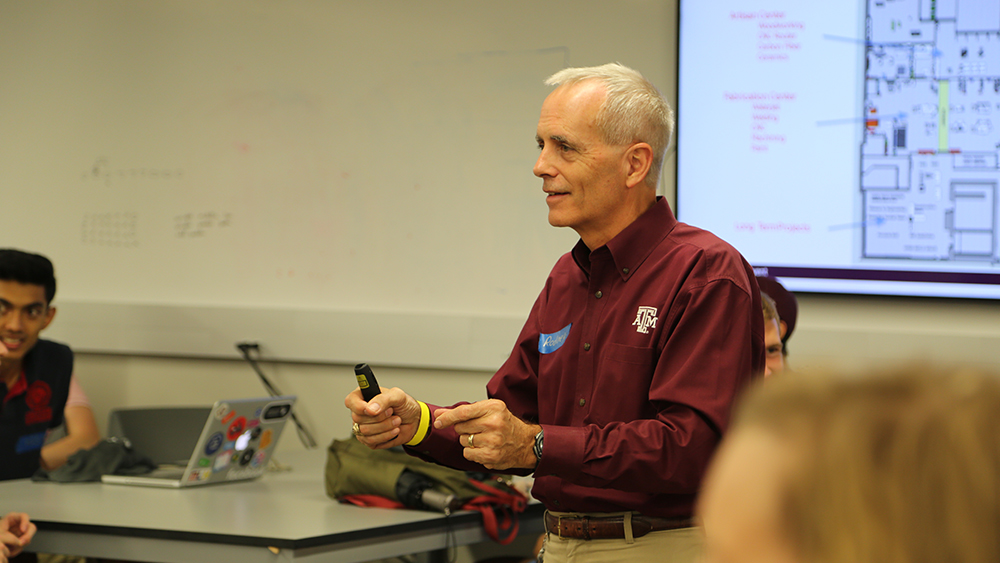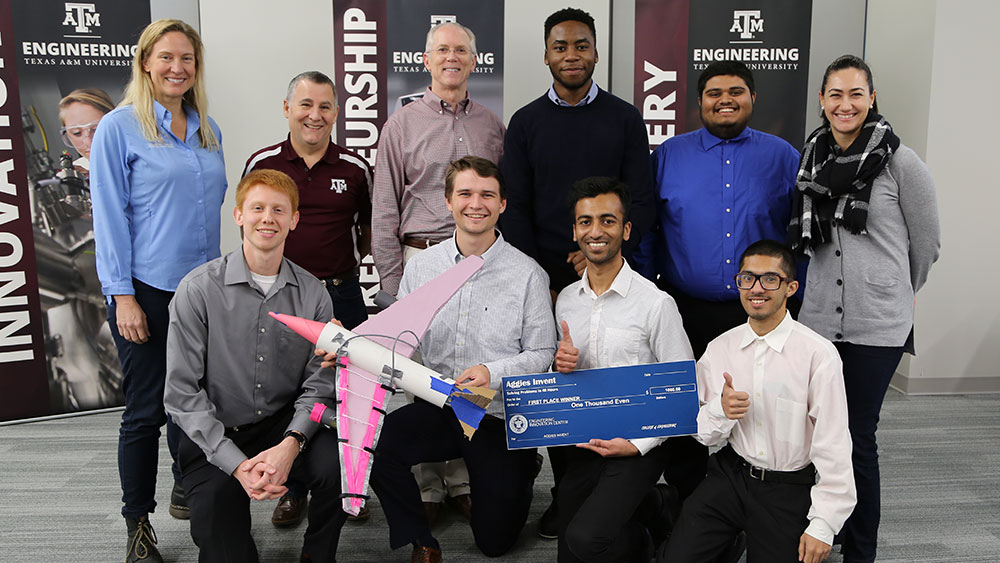
There’s an app for that. Or is there?
Today we use apps for navigation, ride-sharing and local weather enabled by a GPS outdoor location service, but not many apps exist for indoor location. This past weekend, students at Aggies Invent tackled this problem, as well as other similar need statements related to smart technology.
Sponsored by Aruba, a Hewlett Packard Enterprise company, students had the opportunity to develop solutions to problems in 48 hours with experts on hand to guide them.

This was the first Aggies Invent held in the Zachry Engineering Education Complex’s Susu and Mark A. Fischer Engineering Design Center. More than 200 students applied to participate in the weekend-long event, a record number of applicants. Rodney Boehm, Engineering Entrepreneurship Program director, said they had a difficult number narrowing down the selections.
Nine teams of students worked tirelessly to develop innovative apps that integrated Aruba’s Bluetooth Low Energy technology.
In the end, it was team evexia who took home the first-place award of $1,000. Their app focused on simplifying the process of making visiting a hospital for day surgery into three easy steps. For many, going to the hospital is stressful. Patients can get lost trying to find the correct office, then have to fill out a lot of paperwork. By streamlining all of these steps into three or fewer, the team surmised that patients would be much more relaxed throughout the experience.

“I worked in a clinic this summer, and I had so many patients come in and complain about various things, usually the check-in process and being in the wrong building,” said teammate Andrea Brunal, a senior biomedical engineering student. “We knew with this technology we had an opportunity that would be really cool to impact people’s lives.”
Second-place team, Museo, focused on creating an unforgettable experience for art museum patrons. Their app used augmented reality that would bring the art — and the artist — to life.
Instead of simply looking at a piece of art in a museum and wondering where the artist’s inspiration came from, one could use Museo to watch a rendering of a 15-year-old Pablo Picasso talking about his work.
“It’s like Pokemon Go, but Van Gogh,” said teammate Erin Stephan, junior mechanical engineering student.
Third-place team, SmartCart, created an app that allows shoppers to easily find what they are looking for in a store, eliminating the need for a customer to wander up and down the aisles trying to find an item. The team designed a device that hooks onto a shopping cart with a holder to fasten a phone. The bottom of the cart is lined with a scale and sensors. The scale recognizes when items are in the cart that were not on the customer’s shopping list, and then sends the customer a notification to remove the item or scan it. The app also would allow retailers to promote items by sending shoppers push notifications with coupons based on the customer’s location. With an easy payment system built in there’s no need to go through the checkout line.
“The idea is to reduce the amount of time that customers are having to spend in stores, and to improve the efficiency with which they shop,” said teammate Rebecca McFadden, general engineering student. “It also allows brick and mortar stores to collect more data on what their customers are buying and how their store is being used.”

Boehm said it was exciting to host Aggies Invent in the new space.
“We’re grateful for the opportunity to use the Fischer Engineering Design Center for Aggies Invent,” he said. “It gives our students the opportunity to take any idea they have and turn it into a reality. If you dream it we can build it.”
Brandon Look Fong, general engineering student, said Aggies Invent drew him in because it’s a chance to take the skills learned in class and apply them to real-life problems.
“It gives you a chance to affect real change onto the community and maybe onto the world,” Fong said. “It’s like taking the first step and saying ‘who knows where this could go.’”
The next Aggies Invent will be held Oct. 26-28, and the deadline to apply is Oct. 15. To learn more about Aggies Invent: Internet of Things, visit the website.
Felysha Walker and Jennifer Reiley contributed to this article.